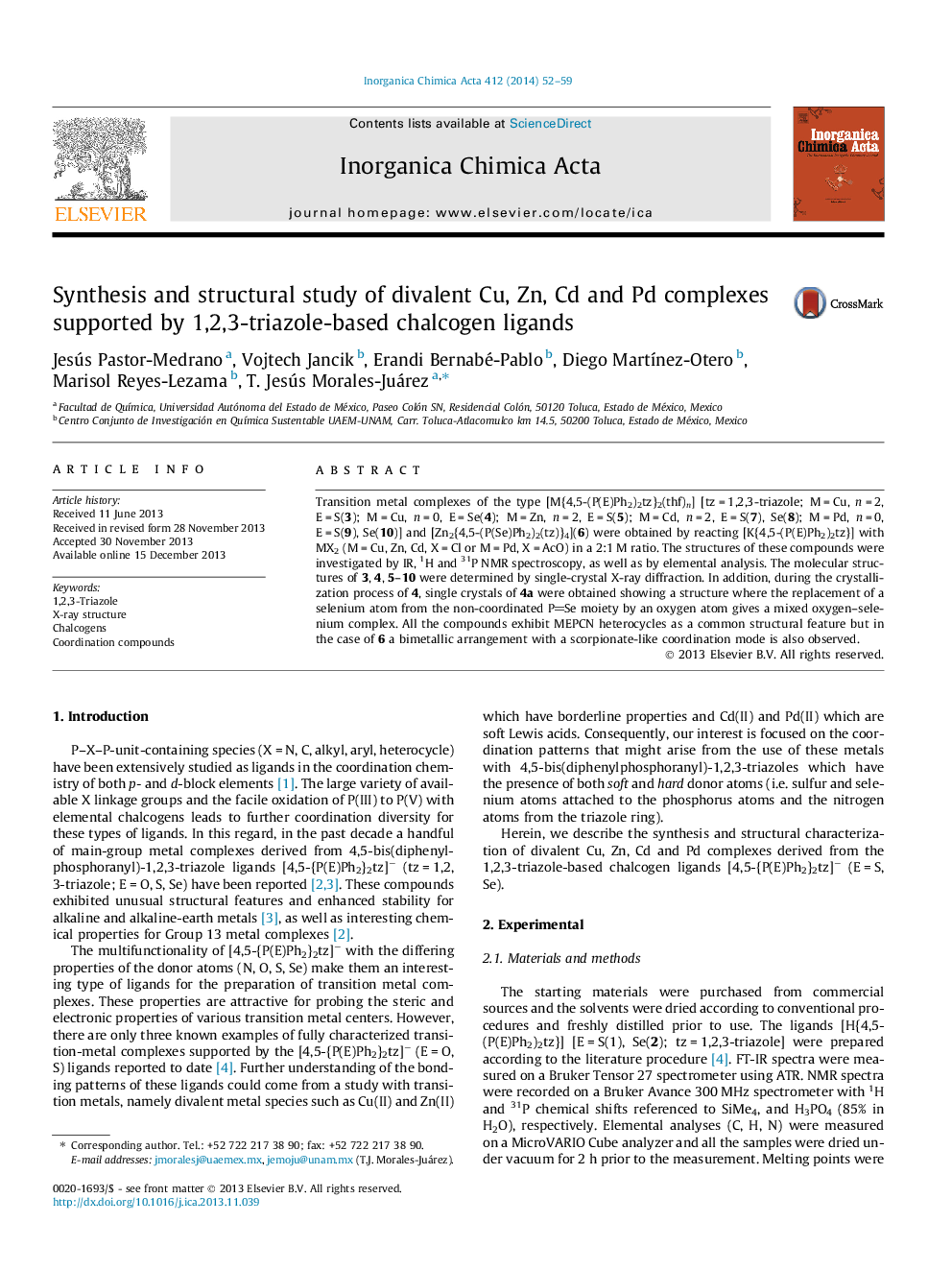| کد مقاله | کد نشریه | سال انتشار | مقاله انگلیسی | نسخه تمام متن |
|---|---|---|---|---|
| 1306945 | 1499176 | 2014 | 8 صفحه PDF | دانلود رایگان |

• Cu, Zn, Cd and Pd complexes with [{4,5-(P(E)Ph2)2(tz)}−] E = (S, Se) were synthesized.
• Their molecular structures were determined by X-ray diffraction.
• The compounds exhibit multiple MEPCN heterocycles as a common structural feature.
• Hydrolysis of the Cu(Se) complex led to the replacement of the Se atoms by O atoms.
• [Zn2{4,5-(P(Se)Ph2)2(tz)}4] exhibits a scorpionate-like coordination mode.
Transition metal complexes of the type [M{4,5-(P(E)Ph2)2tz}2(thf)n] [tz = 1,2,3-triazole; M = Cu, n = 2, E = S(3); M = Cu, n = 0, E = Se(4); M = Zn, n = 2, E = S(5); M = Cd, n = 2, E = S(7), Se(8); M = Pd, n = 0, E = S(9), Se(10)] and [Zn2{4,5-(P(Se)Ph2)2(tz)}4](6) were obtained by reacting [K{4,5-(P(E)Ph2)2tz}] with MX2 (M = Cu, Zn, Cd, X = Cl or M = Pd, X = AcO) in a 2:1 M ratio. The structures of these compounds were investigated by IR, 1H and 31P NMR spectroscopy, as well as by elemental analysis. The molecular structures of 3, 4, 5–10 were determined by single-crystal X-ray diffraction. In addition, during the crystallization process of 4, single crystals of 4a were obtained showing a structure where the replacement of a selenium atom from the non-coordinated PSe moiety by an oxygen atom gives a mixed oxygen–selenium complex. All the compounds exhibit MEPCN heterocycles as a common structural feature but in the case of 6 a bimetallic arrangement with a scorpionate-like coordination mode is also observed.
Transition metal complexes of the type [M{4,5-(P(E)Ph2)2tz}2(thf)n] [tz = 1,2,3-triazole; M = Cu, n = 2, E = S(3); M = Cu, n = 0, E = Se(4); M = Zn, n = 2, E = S(5); M = Cd, n = 2, E = S(7), Se(8); M = Pd, n = 0, E = S(9), Se(10)] and [Zn2{4,5-(P(Se)Ph2)2(tz)}4](6) are reported. All the compounds exhibit MEPCN heterocycles as a common structural feature but in the case of 6 a bimetallic arrangement with a scorpionate-like coordination mode is also observed.Figure optionsDownload as PowerPoint slide
Journal: Inorganica Chimica Acta - Volume 412, 1 March 2014, Pages 52–59